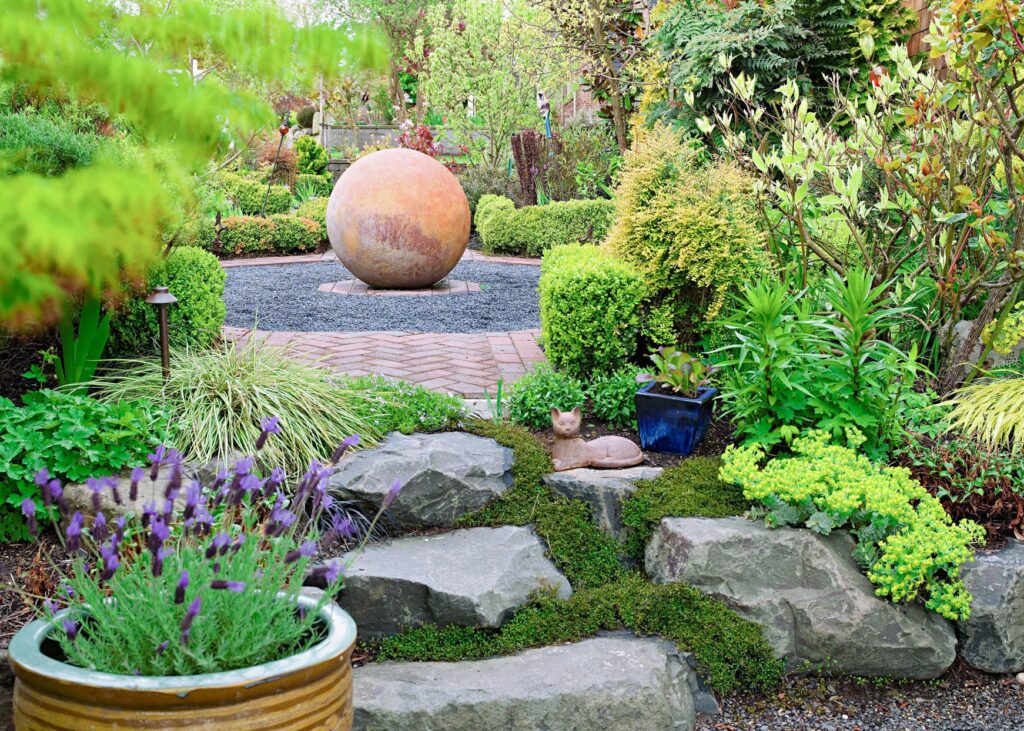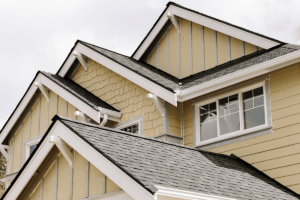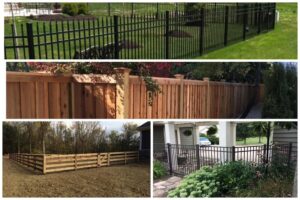Imagine this: every Saturday morning, as your neighbors are out with their lawnmowers and garden tools, you’re relaxing with a cup of coffee, watching from your porch. Their weekends are spent trimming, watering, and weeding, while your front yard looks just as pristine with half the effort. That’s the power of low-maintenance landscaping. It’s not about neglecting your yard—designing it to work for you, minimizing upkeep while maximizing beauty. And in today’s busy world, who wouldn’t want a gorgeous front yard that practically takes care of itself?
Low-maintenance landscaping has become a growing trend, with more homeowners seeking a balance between aesthetics and convenience. In this article, we’ll explore the principles of low maintenance front yard landscaping, popular options, and how to achieve a beautiful, easy-to-care-for yard backed by data and expert insights.
The Rise of Low-Maintenance Landscaping
As modern life gets busier, fewer people have the time or desire to spend hours tending to their gardens. According to a 2021 Houzz Landscaping Trends Study, 67% of homeowners opt for landscaping designs requiring minimal upkeep. Several factors, including time constraints, environmental concerns, and water conservation efforts, drive the shift towards sustainable, low-maintenance yards.
Low maintenance front yard landscaping allows homeowners to enjoy a beautiful yard without the hassle of constant care. This trend is prevalent in regions prone to drought, where water-efficient designs save time and reduce utility bills. The Environmental Protection Agency (EPA) reports that outdoor water use accounts for 30% of household water consumption in the U.S., with up to 50% of water wasted due to inefficient irrigation. Low-maintenance landscaping can significantly lower these numbers.
Benefits of Low-Maintenance Landscaping
The benefits of low-maintenance landscaping go beyond saving time. Here are a few key advantages:
- Water Efficiency: Drought-tolerant plants and efficient irrigation systems can drastically reduce water usage, saving resources and money.
- Cost Savings: With less need for watering, fertilizing, and mowing, low-maintenance landscaping lowers upkeep costs and utilities.
- Environmental Impact: Reducing the need for pesticides, fertilizers, and excessive watering helps create a more eco-friendly yard.
- Curb Appeal: A well-designed low-maintenance yard enhances the aesthetic of your home, which can boost property value. The National Association of Realtors (NAR) found that a well-landscaped home can increase property value by up to 10%.
Choosing the Right Plants: Native and Drought-Resistant Species
One of the most effective ways to create a low-maintenance front yard is by selecting the right plants. Native plants naturally adapted to the local climate often require less water, fertilizer, and pest control. According to Plant Native, native plants can reduce landscape maintenance by 50% because they are hardier and more resistant to local pests.
Drought-resistant plants like succulents, lavender, and ornamental grasses are also excellent choices for low-maintenance landscaping. These plants are adapted to thrive in dry conditions, making them perfect for regions with water restrictions. The U.S. Department of Agriculture (USDA) recommends using xeriscaping techniques—landscaping designed for dry climates—because they can reduce water usage by 50-75% compared to conventional landscaping methods.
Simplifying with Ground Covers and Mulch
Another critical element of low-maintenance landscaping is reducing the amount of lawn or grass, which requires frequent mowing, watering, and fertilizing. Instead, consider replacing traditional grass lawns with ground covers like clover, creeping thyme, or moss, which require far less attention.
Mulch is another simple yet effective tool for keeping your yard low maintenance. A layer of mulch around plants and trees helps retain soil moisture, reduces the need for frequent watering, and suppresses weed growth. The Mulch and Soil Council suggests that a 2-3 inch layer of mulch can reduce water evaporation from soil by up to 25%, helping plants thrive with less care.
Hardscaping: A Stylish, Low-Maintenance Solution
Hardscaping—using non-plant materials like rocks, pavers, and gravel—offers a practical and attractive way to create a low-maintenance front yard. By incorporating hardscape features like stone walkways, patios, or rock gardens, you can reduce the amount of grass and other high-maintenance plantings.
According to Angi (formerly Angie’s List), hardscaping features can last 20-30 years with minimal maintenance, making them a wise investment for homeowners looking to reduce yard work in the long term. Using permeable pavers and gravel also allows rainwater to filter through the ground, reducing runoff and promoting eco-friendly drainage solutions.
Efficient Irrigation Systems
Even in a low-maintenance yard, some plants will need water. However, modern irrigation technology minimizes the time and water required to keep your garden thriving. Drip irrigation systems, for example, deliver water directly to the base of plants, ensuring that they receive just the right amount without waste.
The EPA’s WaterSense program estimates that homes with efficient irrigation systems can save up to 7,600 gallons of water annually. Intelligent irrigation systems, which can be controlled via smartphone apps and adjust watering schedules based on weather conditions, are becoming increasingly popular as homeowners look to save both water and time.
Designing for All Seasons
Another principle of low-maintenance landscaping is designing your yard to look good year-round, with plants and materials that require minimal seasonal upkeep. Evergreen shrubs, ornamental grasses, and native perennials provide structure and color throughout the seasons without replanting or excessive care.
Perennials, in particular, are an excellent choice because they return year after year. According to Better Homes & Gardens, planting perennials can reduce replanting costs by 30%, making them both a low-maintenance and cost-effective option.
Sustainable Lawn Alternatives
Traditional lawns are among the highest-maintenance elements of any yard. They require frequent mowing, watering, and fertilizing and often consume significant amounts of water. A study by the Irrigation Association found that the average lawn uses 20,000 gallons of water annually. Maintaining a traditional lawn can be impractical in regions prone to drought or with water restrictions.
Consider alternatives like artificial turf or low-maintenance grass species such as buffalo grass or zoysia grass. These grasses are drought-resistant and require minimal mowing and fertilizing, making them ideal for homeowners seeking to reduce yard maintenance.
Adding Value with Low-Maintenance Landscaping
In addition to making your life easier, low-maintenance landscaping can significantly increase your home’s curb appeal and resale value. A survey conducted by the American Society of Landscape Architects (ASLA) found that landscaping projects can return up to 100% of the investment when a home is sold. Buyers appreciate well-maintained yards, and a low-maintenance design is beautiful for those who want a lovely outdoor space without the work.
Furthermore, with the growing focus on sustainability and water conservation, homes with eco-friendly landscaping are in higher demand. Zillow reported that homes with drought-tolerant landscaping sold 19 days faster than those with traditional lawns, demonstrating the increasing preference for low-maintenance, water-efficient yards.
Conclusion
Low-maintenance front yard landscaping is more than just a trend—it’s a practical, sustainable approach to creating a beautiful outdoor space that works for you, not the other way around. By choosing native, drought-resistant plants, incorporating hardscaping, and installing efficient irrigation systems, you can enjoy a stunning front yard without spending hours on upkeep.
The benefits of low-maintenance landscaping are evident, from water conservation to boosting property value. Whether you’re looking to cut down on yard work, reduce your water bill, or create an eco-friendly garden, this approach offers many solutions that fit into modern, busy lifestyles.






